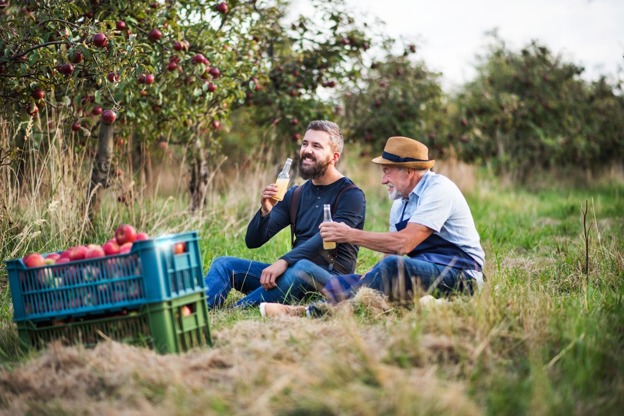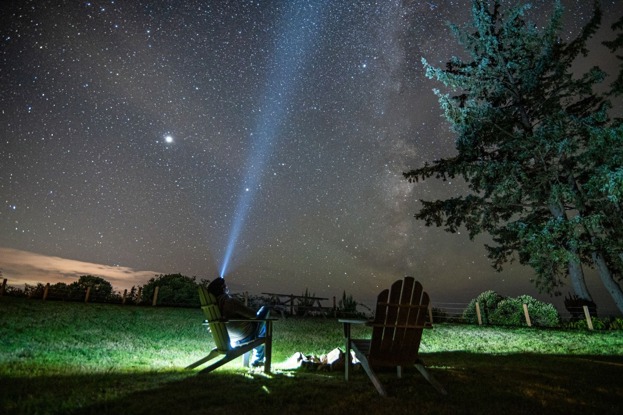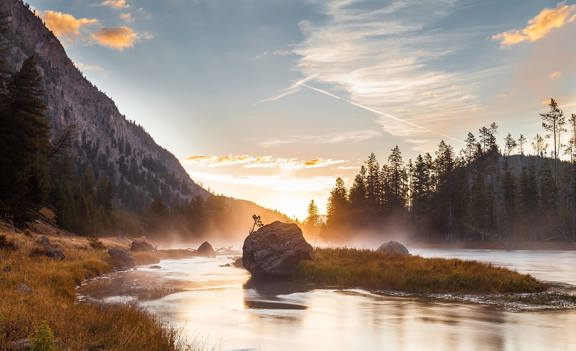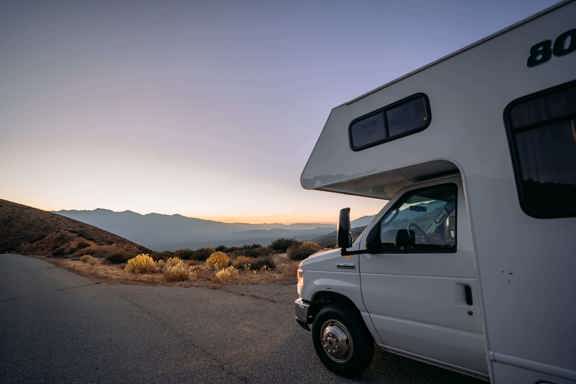

Have you ever wanted to inject a little adventure into your everyday life without needing to plan an expensive vacation or take weeks off work? Microadventures offer the perfect solution. These short, simple trips let you step outside your comfort zone, explore the great outdoors, and enjoy the thrill of travel right in your own neighborhood or nearby areas.
Whether it’s a night hike under a full moon, a quick wild swimming session in a local river, or a weekend RV getaway, microadventures prove that meaningful travel doesn’t require much money or elaborate planning. For families, professionals, and anyone looking to escape the routine, embracing mini adventures can spark creativity, refresh the mind, and provide a sense of adventure that fits into a few hours or an entire weekend.
In this guide, we’ll explain what microadventures are, explore popular microadventure ideas, and show how RV travel can make it easier to embark on small adventures that feel exciting and memorable. Whether you’re seeking stargazing, a new trail, or local discoveries, this guide will help you get started on your next adventure with simplicity and fun.
What Are Microadventures?

Microadventures are short, simple, and often local trips designed to break the routine of everyday lives without requiring extensive planning, long travel, or a lot of money. The term was popularized by Alastair Humphreys, a British adventurer, who encouraged ordinary people to find creative ways to inject adventure into their lives.
The core idea behind microadventures is that adventure starts close to home. These trips are about making the most of the great outdoors around you—whether that’s spending the night under the night sky, exploring a hidden hiking path, or heading out for some barebones camping. They’re meant to be accessible, manageable, and flexible, making it easier for families, friends, and solo travelers to experience the thrill of travel without weeks off work, or needing to put a lot of resources behind the excursion.
Microadventures challenge your comfort zone in small, meaningful ways. They can include mini adventures such as:
-
A night hike to watch the full moon rise over a local hill.
-
Wild swimming in a nearby lake or river.
-
Exploring a local farm or nearby state parks.
-
Camping overnight in a backyard or a nearby RV-friendly site.
By redefining what an adventure can be, microadventures inspire people to explore, discover, and reconnect with nature while staying close to home. They demonstrate that meaningful small adventures don’t require much money or complicated logistics—just a sense of curiosity and a willingness to step outside your routine.
Benefits of Small Adventures

Microadventures offer a host of benefits for anyone looking to bring a little excitement into their everyday lives. Even short excursions (just a few hours) can have a big impact on your physical health, mental well-being, and overall sense of happiness.
1. Easy to Fit Into Busy Schedules
One of the biggest advantages of microadventures is their accessibility. You don’t need weeks of vacation or extra money in the bank—even a few hours can count as a meaningful adventure. An evening hike or a quick trip to a nearby creekbed or wildlife sanctuary can refresh your perspective and provide a sense of escape.
2. Encourages Exploration Close to Home
By looking for local discoveries, microadventures inspire you to explore your surroundings in new ways. Whether it’s a new trail, a walk through your own garden, or a visit to a local orchard, these trips highlight the hidden gems in your community and make ordinary people feel like explorers.
3. Mental and Physical Health Benefits
Spending time outdoors, hiking, or camping has been shown to reduce stress, improve mood, and increase physical activity. Activities like rock climbing, mountain biking, or even a gentle walk reconnect you with nature and help build resilience, focus, and a renewed sense of inspiration.
4. Affordable and Accessible
Many microadventures require little planning or expense. You don’t need to book flights or hotels—RV travel or local camping can make small adventures simple and budget-friendly. Even a sunrise hike or a night under the stars can feel like a big adventure.
5. Sparks Creativity and Open-Mindedness
Short, adventurous trips encourage creative ways to enjoy the outdoors. Planning mini adventures fosters resourcefulness, flexibility, and a sense of accomplishment. By stepping outside your comfort zone, you can cultivate open-mindedness and a deeper connection to the great outdoors.
In short, microadventures transform everyday experiences into memorable escapes, proving that adventure doesn’t require extensive travel or much money—just curiosity, planning, and a willingness to explore.
Popular Microadventure Ideas

Microadventures are short, simple trips that bring excitement into your everyday lives without requiring weeks off, complicated planning, or a big budget. The best part? Most of these trips are within reach of your home, making them easy to fit into a weekend—or even a few hours. Here are 15 specific microadventure ideas with practical examples to inspire your next adventure:
1. Backyard or Local Park Camping
-
Pitch a tent in your backyard or a nearby small town park.
-
Spend the evening stargazing, cooking over a small campfire, or having a night hike around the property.
-
Simple to plan: no reservations needed, minimal gear, and perfect for families or solo explorers.
2. One-Night Wild Camping Trip
-
Drive your RV to a nearby state park, forest, or a close national park such as Glacier National Park.
-
Set up a wild camping spot, enjoy the night sky, and wake up to a sunrise hike.
-
Easy to plan: check local park regulations, pack a few essentials, and you’re ready.
3. Full Moon Night Hike
-
Choose a new trail or local recreational area within an hour of home.
-
Bring a flashlight or headlamp, and hike under a full moon for a magical experience.
-
Quick planning: select a trail, check the moon phase, and pack some tasty treats.
4. Sunrise or Sunset Hike
-
Visit a nearby hill or park for sunrise or sunset views, such as Mount Tamalpais (CA) or a local overlook.
-
Bring a day pack with a thermos and camera to capture the moment.
-
Easy: short drive, minimal gear, and you can be back in time for work or dinner.
5. Stargazing in a Remote Spot
-
Drive to a dark-sky areas like Cherry Springs State Park (PA), Joshua Tree National Park, or even a rural field.
-
Bring blankets, snacks, and a star chart.
-
Planning is simple: pick the location, check weather, and bring a few key items.
6. River or Lake Microadventure
-
Short kayaking, canoeing, or wild swimming at a local river, lake, or inlet.
-
Example spots: Lake Powell, Columbia River Gorge, or your local river access point.
-
Easy: pack water shoes, a towel, and snacks; you’re ready in under 30 minutes.
7. Bike and Hike Combo
-
Ride a mountain bike to a trailhead, then continue on foot for a short day hike.
-
Example: Moab, Utah, Kingdom Trails (Vermont), or a local multi-use path.
-
Minimal planning: bike, helmet, hiking boots, and hydration are all you need.
8. Local Farm Visit or Foraging
-
Visit a local farm for produce, a mini-workshop, or seasonal activity like pumpkin picking.
-
Alternative: forage for edible berries or wild herbs near home with a guide.
-
Very simple: check opening hours, bring a bag, and enjoy local discoveries in a few hours.
9. Mini Rock Climbing Adventure
-
Visit a beginner-friendly crag or indoor climbing gym with outdoor options.
-
Example locations: Red River Gorge, KY, Smith Rock, OR, or local climbing spots.
-
Quick prep: climbing shoes, chalk bag, and a harness—perfect for a mini adventure after work.
10. Waterfall or Scenic Short Hike
-
Explore a nearby waterfall, canyon, or overlook within 30–60 minutes of home.
-
Example: Havasu Falls (AZ), local park waterfalls, or nearby canyons.
-
Easy: just pack water, snacks, and hiking boots, and you’re set.
11. Urban Microadventure
-
Explore a nearby small town or neighborhood on foot.
-
Discover hidden murals, local shops, or rooftop views.
-
No gear needed beyond comfortable shoes and a day pack; you can walk home when done.
12. Forest Bathing or Nature Walk
-
Spend 1–2 hours on a new trail in a nearby forest, engaging all senses to relax and recharge.
-
Example: Redwood National and State Parks, Shenandoah, or local woods.
-
Simple planning: no reservation, just pack water and enjoy the peace of the great outdoors.
13. Overnight RV Getaway
-
Drive to a nearby national park or scenic area for a quick overnight trip.
-
Examples: Glacier National Park, Great Smoky Mountains, Olympic National Park.
-
Planning is easy: book a campsite, pack essentials, and let the RV be your home base.
14. Mini Adventure Along a River
-
Hike a short trail along a river, swim in calm pools, or have a riverside picnic.
-
Examples: Mississippi River, Colorado River, or a local riverwalk.
-
Quick and easy: 1–2 hours, minimal gear, and plenty of fun.
15. Seasonal Adventure
-
Spring: wildflower hikes or local garden exploration
-
Summer: stargazing or wild swimming
-
Fall: leaf-peeping hikes
-
Winter: snowshoeing or short winter hikes in state parks
-
Flexible planning: pick a season, a nearby location, and spend a few hours enjoying mini adventures.
These microadventure ideas show that adventure doesn’t need to be complicated or expensive. With a little planning, ordinary people can step outside their routine, enjoy small adventures, and experience the thrill of exploring the great outdoors—all while keeping it simple, fun, and accessible.
Why RVs Are Perfect for Local Discoveries

RVs are the ultimate tool for turning microadventures into a reality. They provide flexibility, comfort, and convenience, making it easy to embark on mini adventures without extensive planning or worrying about lodging.
1. Flexibility and Spontaneity
With an RV, your next adventure can start anytime. Whether it’s a day hike, a night of wild camping, or a weekend exploring a new section of woods, you have the freedom to go wherever the mood strikes. You can change plans on a whim, make any local place a new discovery, or chase the perfect star gazing spot without having to book hotels or rely on strict schedules.
2. Access to Remote and Scenic Locations
RVs allow you to reach destinations that are often inaccessible to day-trippers. Drive to nearby national parks, a local farm, or remote state parks and enjoy mini adventures in places that feel off the beaten path. With your RV as a base, you can pack day packs and explore multiple trails or natural features in a single trip.
3. Comfort and Convenience on the Road
One of the biggest barriers to microadventures is the thought of being uncomfortable or unprepared. An RV provides a warm bed, kitchen access, and storage for all your gear—from hiking boots and camping supplies to snacks and water. This makes small adventures like overnight camping or finding a swimming hole stress-free, even for those just starting.
4. Easy Planning for Groups or Families
RVs make it simple for families or friends to enjoy mini adventures together. With sleeping space, kitchen facilities, and storage for camping gear, you can spend more time exploring and less time coordinating logistics. Everyone can participate in microadventures like night hikes, river picnics, or stargazing without worrying about accommodations.
5. Encourages More Frequent Adventures
Having an RV encourages people to integrate microadventures into their routine. Since the RV is ready to go, even a few hours can become an exciting escape—whether it’s a spontaneous day hike, a quick trip to a nearby river, or a weekend wild camping experience.
By combining the mobility of an RV with the simplicity of microadventures, you can experience the great outdoors, enjoy mini adventures, and explore both familiar and remote locations with ease. RV travel transforms short, local trips into accessible, fun, and meaningful escapes.
Planning Your Next Adventure with an RV
One of the best things about microadventures is how easy they are to plan, especially with an RV. With the right approach, even a spontaneous trip can turn into a memorable mini adventure. Here’s how to make the most of your RV-based microadventure ideas:
1. Choose Accessible Destinations
-
Pick locations within a few hours’ drive to maximize your time on the trail or at your activity.
-
Options include nearby state parks, local rivers, small towns, or national parks with RV-friendly campsites.
-
Consider multiple locations for a weekend trip to combine day hikes, stargazing, or wild camping.
2. Pack Smart and Light
-
Use a day pack for short day hikes and bring only the essentials: water, snacks, first aid supplies, and extra layers.
-
Keep the RV organized with compartments for hiking boots, gear, and overnight camping supplies.
-
Include items for comfort, like blankets, extra clothes, and a small cooking setup for meals.
3. Schedule Around Your Interests
-
Plan your next adventure around activities you enjoy: rock climbing, mountain biking, night hikes, or bird watching.
-
Include time for relaxing microadventures like wild swimming, stargazing, or simply exploring a new trail.
4. Consider Seasonal Factors
-
Check weather conditions to avoid wet weather or unsafe trails.
-
Spring and fall are ideal for hiking, camping, and local discoveries, while summer evenings are perfect for stargazing.
5. Safety and Convenience
-
Make sure someone knows your route, especially for wild camping or remote trips.
-
Keep emergency supplies, first aid kits, and a day pack ready for quick access.
-
Even for a short trip, check for cell service availability and pack backup lighting for night hikes.
Planning an RV-based microadventure doesn’t require complicated logistics. By keeping destinations close, packing efficiently, and preparing for the weather and terrain, you can enjoy spontaneous mini adventures that fit easily into your busy life. The flexibility of RV travel ensures that each trip, whether it’s a quick day hike or an overnight excursion, is simple, enjoyable, and memorable.
What to Bring on Your Microadventure

Packing the right items can make your microadventure more enjoyable, comfortable, and memorable. Since microadventures are typically short and flexible, the goal is to bring a few key items that cover safety, comfort, and inspiration. Here’s a practical checklist:
1. Essentials for Any Microadventure
-
A day pack to carry all your items comfortably
-
Water bottle or hydration pack to stay hydrated
-
Snacks such as trail mix or energy bars for quick fuel
-
Weather-appropriate clothing: layers, rain jacket, hat, and sturdy shoes or hiking boots
-
First aid kit or aid kit for minor injuries
2. Tools for Exploration and Observation
-
Notebook or field journal to jot down thoughts, observations, or inspiration during your journey
-
Pen or pencil, and optional colored markers for sketches
-
Binoculars for bird watching or wildlife observation
-
Compass, map, or smartphone GPS for navigation
3. Comfort and Convenience Items
-
Blanket or lightweight sitting pad for rest breaks or stargazing
-
Flashlight or headlamp for night hikes
-
Extra layers for changing weather conditions
-
Small camera or smartphone for documenting your local discoveries
4. Optional Adventure Gear
-
Trekking poles for uneven terrain
-
Portable cooking gear for overnight microadventures
-
Pocket knife or multi-tool for small tasks
5. Personal Inspiration and Reflection
-
Your field journal is one of the most powerful tools for a microadventure. Writing down your thoughts, feelings, and observations allows you to reflect on your experience, track local discoveries, and capture creative ideas for future mini adventures. This practice encourages mindfulness and helps you notice details you might otherwise overlook.
Your Next Mini Adventures Await!
Microadventures are the perfect way to bring excitement, discovery, and connection to your everyday lives. Ready to start your trip? Rent an RV from Cruise America and grab your day pack, new sights are just around the corner!





